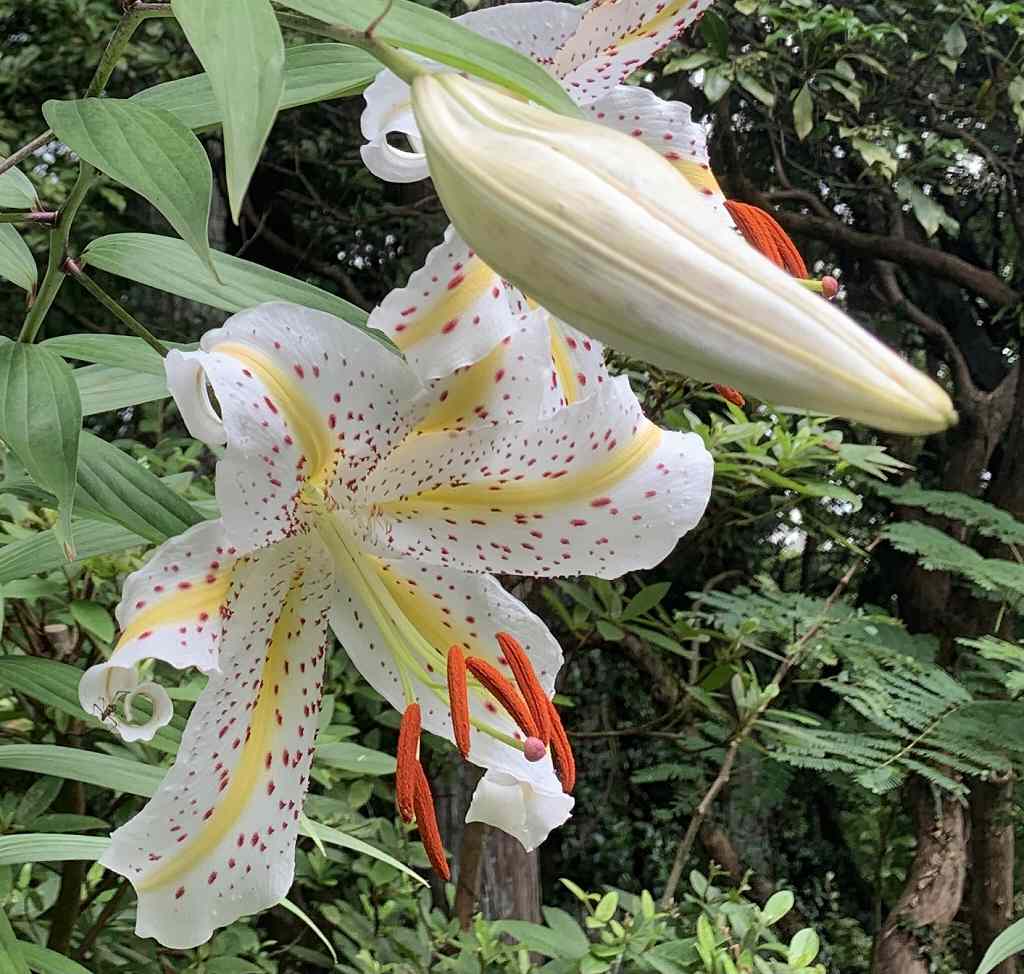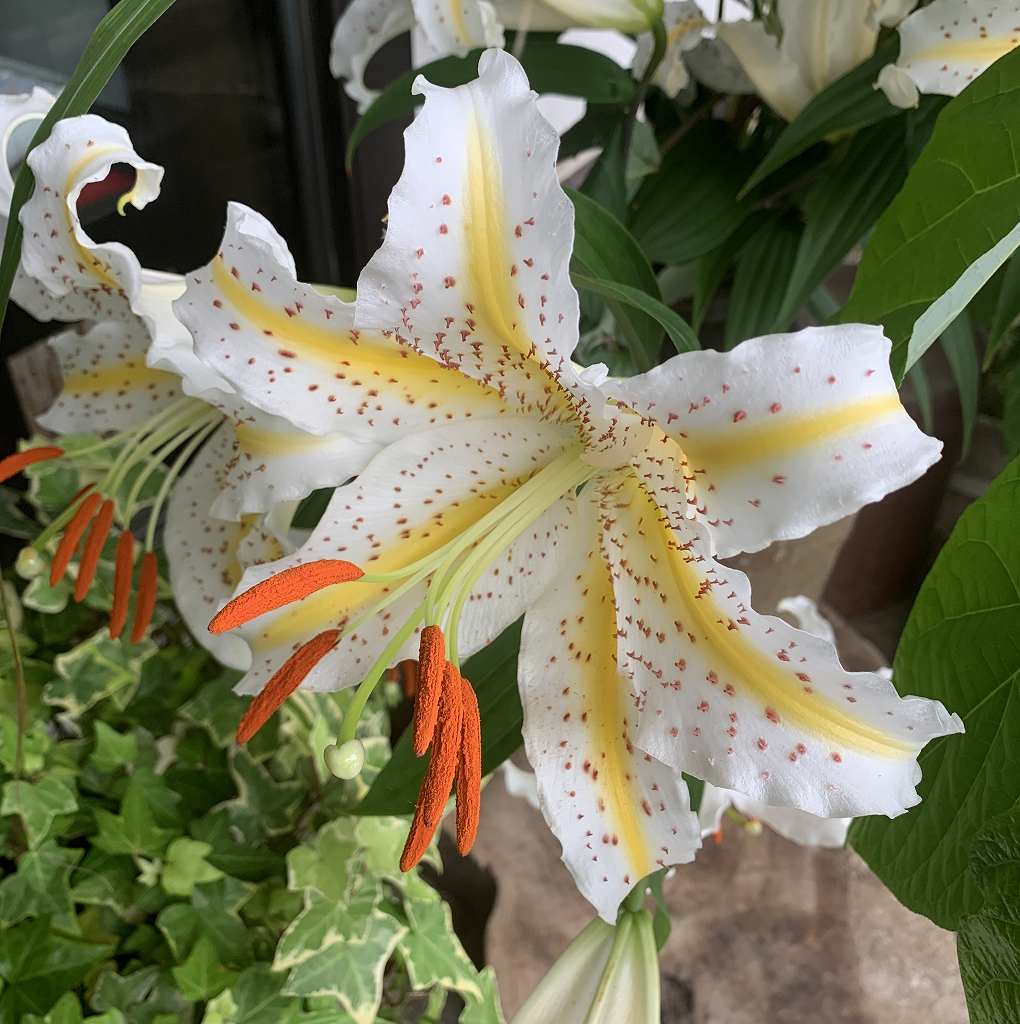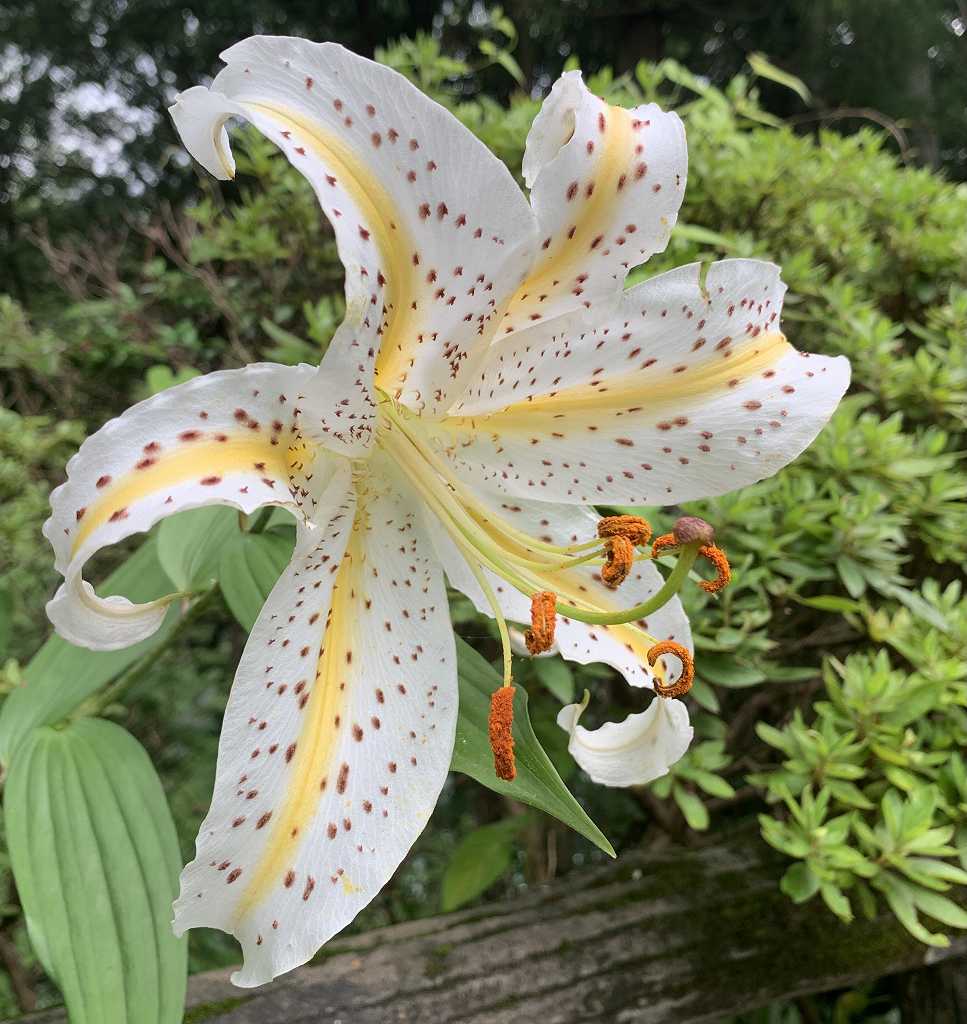ヤマユリは日本在来の多年生植物です。花が白く、大型で目立ち、強い芳香を放ちます。鱗茎は食用で、生薬としても利用されます。
The golden-rayed lily is a perennial plant native to Japan. The flowers are white, large and conspicuous, giving off a strong fragrance. Bulbs are edible and are also used as crude drugs.
【仮名】ヤマユリ, リョウリユリ
【和名】山百合, 料理百合
【英名】Golden-rayed Lily, Gold-banded Lily
【学名】Lilium auratum
【誕生】06/ 30, 07/ 21
【開花】07, 08月
【花色】White



ヤマユリ
ヤマユリは日本の在来植物
ヤマユリはユリ科ユリ属で、日本在来の多年生植物です。北陸地方を除く、本州の近畿地方以北に分布し、山地、山野の林縁、草地に自生。花が白く、大型で目立ち、強い芳香を放ちます。
ヤマユリは多くの名前がある
ヤマユリは鱗茎が食用になるので、料理百合とも呼ばれます。地方によっては吉野百合、芳野百合、叡山百合、蓬莱寺百合、鳳来寺百合など。それだけ昔から馴染みのある植物といえます。
ヤマユリは豪華で華麗な姿
ヤマユリの花は、重みで茎全体が弓なりに傾くほど大きく、甘く濃厚な香りが特徴。発芽から5年以上かけて咲き始め、古い株ほど多く咲きます。豪華で華麗な姿から「ユリの王様」とも。
ヤマユリの球根は輸出品だった
ヤマユリの球根は大正時代まで貴重な輸出品でした。1873年のウィーン万博で紹介されると注目を集め、栽培品種の母株として重用。改良品種はオリエンタル・ハイブリッドと呼ばれます。
ヤマユリの鱗茎は食べられる
ヤマユリの鱗茎は「ユリ根」として食べられます。鱗茎は多糖類の一種であるグルコマンナンを多量に含有。縄文時代にはすでに食用にされていたようです。よく煮ると糊状になって美味。
ヤマユリの鱗茎は生薬
ヤマユリの鱗茎は生薬で、鎮咳、強壮、口腔内や胃粘膜の保護に効果的。温まるときに出る咳や、微熱・動悸があるときの不眠など。おできには乾燥粉末を酢で練って貼るとよいそうです。
ヤマユリは花言葉が多い
ヤマユリには多くの花言葉があります。豪華な花の姿で「荘厳」「威厳」、山で咲くことから「飾らぬ美」「飾らない愛」、見つけた時の喜びで「人生の楽しみ」、花の白さから「純潔」。
Golden-rayed Lily
The golden-rayed lily belongs to the genus Lily of the Liliaceae family and is a perennial plant native to Japan. It is distributed north of the Kinki region of Honshu, excluding the Hokuriku region, and grows naturally in the mountains, forest edges of mountains, and grasslands. The flowers are white, large and conspicuous, giving off a strong fragrance.
The golden-rayed lily is also called a cooking lily because its bulbs are edible. Depending on the region, Yuri Yoshino, Yuri Yoshino, Yuri Eiyama, Yuri Houraiji, Yuri Horaiji, etc. It can be said that it is a plant that has been familiar to us for a long time.
The flowers of the golden-rayed lily are so large that the entire stem tilts like a bow due to the weight, and it is characterized by a sweet and rich scent. It begins to bloom more than 5 years after germination, and the older the plant, the more it blooms. From its gorgeous and splendid appearance, it is also called the “King of Lilies”.
Golden-rayed lily bulbs were a valuable export product until the Taisho era. When introduced at the Vienna World’s Fair in 1873, it attracted attention and was heavily used as a mother strain of cultivars. The improved varieties are called Oriental Hybrids.
The bulbs of the golden-rayed lily are eaten as “lily roots”. Bulbs contain a large amount of glucomannan, which is a type of polysaccharide. It seems that it was already edible in the Jomon period. When boiled well, it becomes paste-like and delicious.
Golden-rayed lily bulbs are herbal medicines that are effective in antitussive, tonic, and protecting the oral cavity and gastric mucosa. Coughing when warming up, insomnia when there is a slight fever or palpitation, etc. It is said that dry powder should be kneaded with vinegar and pasted.
There are many flower words in the golden-rayed lily. “Majestic” and “dignity” in the form of gorgeous flowers, “undecorated beauty” and “undecorated love” from blooming in the mountains, “enjoyment of life” with the joy of finding them, and “innocence” from the whiteness of the flowers.


